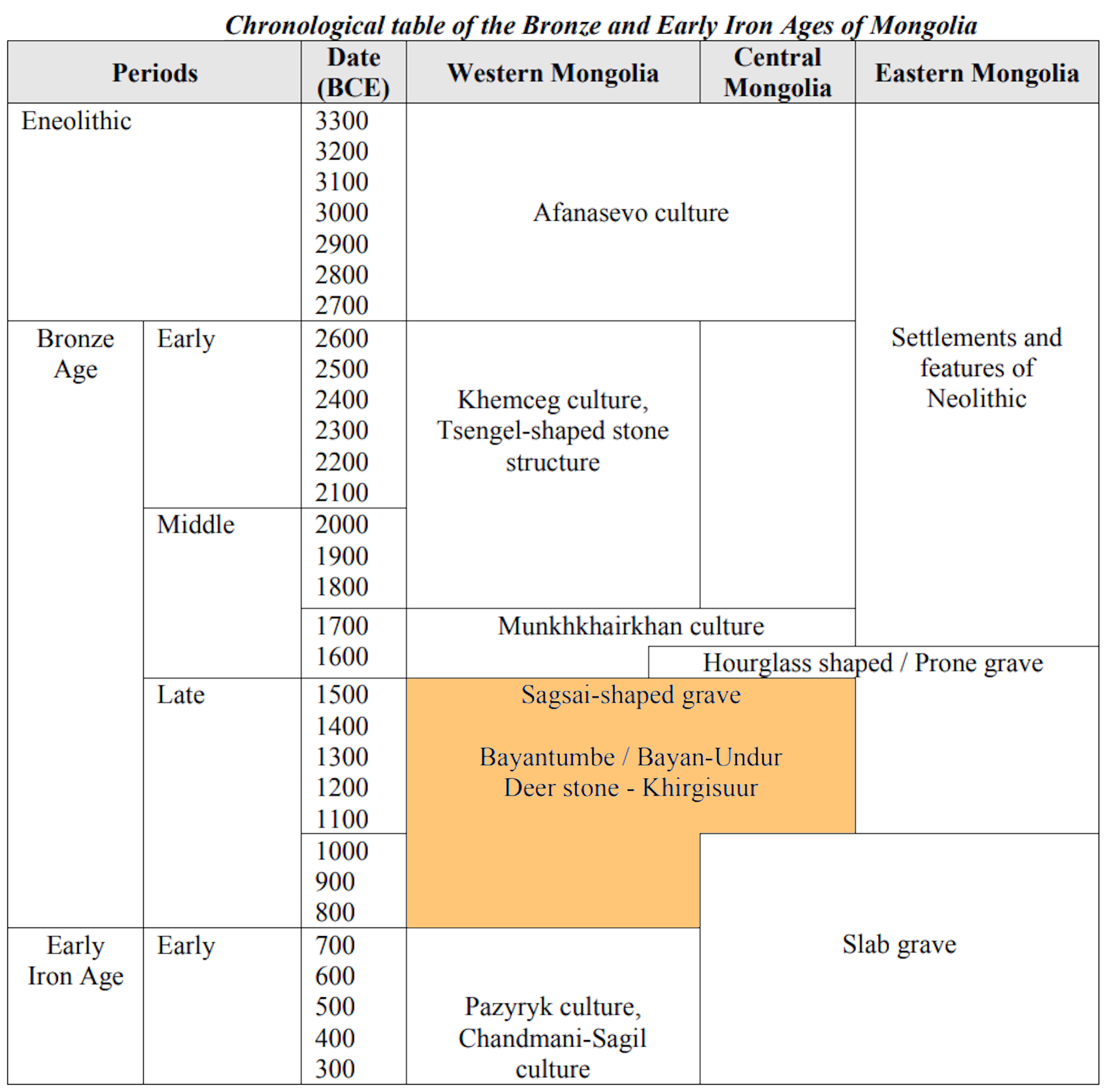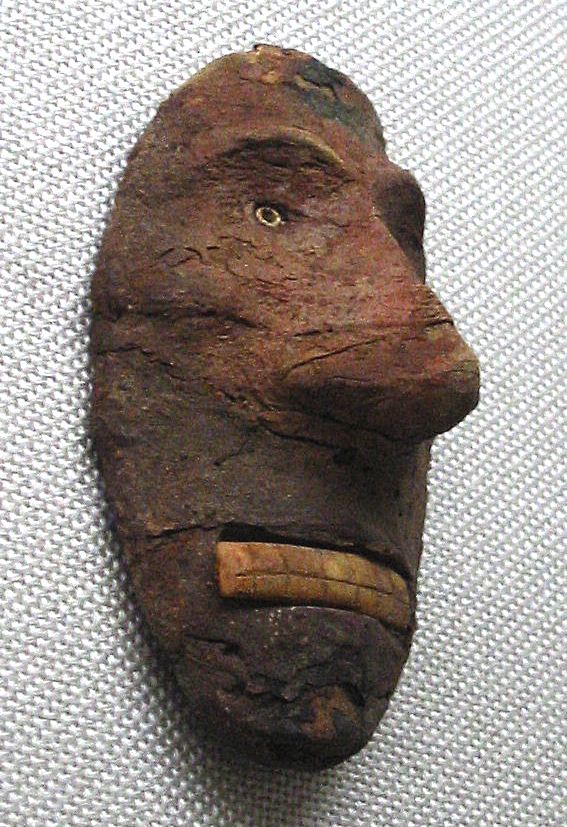|
Chemurchek
The Chemurchek culture (Ch:切木尔切克, ''Qièmùěrqièkè''; Ru: Чемурчекская культура), also called Khemtseg, Hemtseg, Qiemu’erqieke, Shamirshak (2750–1900 BCE), is a Bronze Age archaeological culture of western Mongolia and the borders of neighbouring countries, such as the Dzungarian Basin of Xinjiang and eastern Kazakhstan. It immediately follows the Afanasievo culture, and is contemporary with the early Tarim Mummies to the south and the Okunev culture to the north. The Chemurchek burials are characterized by large rectangular stone fences, built around collective tombs. The mortuary position of the deceased (supine position with flexed legs) is similar to that of the Afanasievo culture, but the Chemurchek culture is considered distinct. The name "Chemurchek culture" is derived from the Chemurchek cemetery in Altay City, Xinjiang, China. Chemurchek sites have been identified from western Mongolia to areas as far west as the Ili valley in Kazakhst ... [...More Info...] [...Related Items...] OR: [Wikipedia] [Google] [Baidu] |
Afanasievo Culture
The Afanasievo culture, or Afanasevo culture (Afanasevan culture) ( ''Afanas'yevskaya kul'tura''), is an early archaeological culture of south Siberia, occupying the Minusinsk Basin and the Altai Mountains during the eneolithic era, 3300 to 2500 BCE. It is named after a nearby mountain, Gora Afanasieva () in what is now Bogradsky District, Khakassia, Russia, first excavated by archaeologist Sergei Teploukhov from 1920 to 1929. Afanasievo burials have been found as far as Shatar Chuluu in central Mongolia, confirming a further expansion about 1,500 km beyond the Altai Mountains. The Afanasievo culture is now considered as an integral part of the Prehistory of Western and Central Mongolia. According to David W. Anthony the Afanasevan population was descended from people who migrated c. 3700–3300 BCE across the Eurasian Steppe from the pre- Yamnaya Repin culture of the Don-Volga region. It is considered as "intrusive from the west", in respect to previous local ... [...More Info...] [...Related Items...] OR: [Wikipedia] [Google] [Baidu] |
Deer Stones Culture
Deer stones (), sometimes called the Deer stone-khirigsuur complex (DSKC), in reference to neighbouring khirigsuur tombs, are ancient megaliths carved with symbols found mainly in Mongolia and, to a lesser extent, in the adjacent areas in Siberia. 1,300 of the 1,500 deer stones found so far are located in Mongolia. The name comes from their carved depictions of flying deer. The "deer stones culture" relates to the lives and technologies of the late Bronze Age peoples associated with the deer stone complexes, as informed by archaeological finds, genetics, and the content of deer stone art. The deer stones are part of a pastoral tradition of stone burial mounds and monumental constructions that appeared in Mongolia and neighbouring regions during the Bronze Age (). Various cultures occupied the area during this period and contributed to monumental stone constructions, starting with the Afanasievo culture and continuing with the Okunev, Chemurchek, Munkhkhairkhan, or Ulaanzuuk ... [...More Info...] [...Related Items...] OR: [Wikipedia] [Google] [Baidu] |
Sagsai Culture
The Sagsai culture (1500-1000 BCE) is an early Bronze Age culture of Western Mongolia. It was centered on the Sagsai area (the westernmost region of modern Mongolia) and succeeded the Chemurchek culture. The Sagsai culture is thought to have used horse chariots, prior to 1200 BCE, as shown by dated petroglyphs in the region. It was followed by the Deer stones culture. At the same time the Ulaanzuukh-Tevsh culture was prospering in the steppes of southern and eastern Mongolia in the 13th century BCE, and seems to have transmitted the horsedrawn chariot to the Chinese Shang dynasty The Shang dynasty (), also known as the Yin dynasty (), was a Chinese royal dynasty that ruled in the Yellow River valley during the second millennium BC, traditionally succeeding the Xia dynasty and followed by the Western Zhou d .... File:Sagsai-shaped graves (positions), Mongolia.jpg, Sagsai-shaped graves, Mongolia. File:Sagsai-shaped graves, Mongolia.jpg, Sagsai-shaped graves, M ... [...More Info...] [...Related Items...] OR: [Wikipedia] [Google] [Baidu] |
Yanbulaq Culture
The Yanbulaq culture (Ch: 焉不拉克文化 or 焉布拉克文化, Yanbulake wenhua, 1100–500 BCE) was an ancient culture based on the tombs of the Yanbulaq Cemetery (Chinese 焉不拉克古墓群, Pinyin Yānbùlākè gǔmùqún or焉不拉克墓地, Yānbùlākè mùdì , English Yanbulaq Cemetery) located on the northern hills of the Qumul Basin, in Yizhou District, Xinjiang, China. It was a Bronze Age culture, or an early Iron Age culture. The cemetery at Yanbulaq contained 29 mummies which dated from 1100 to 500 BCE, 21 of which are Asian—the earliest Asian mummies found in the Tarim Basin—and the remaining 8 are of the same Caucasian physical type as found at Qäwrighul. These later and eastern "Tarim mummies" represented both "Caucasoid" and "Mongoloid" remains, indicating contact between newly arrived western nomads and agricultural communities in the east. The Yuezhi may have been positionned around the Shirenzigou culture area, between the Subeshi culture to ... [...More Info...] [...Related Items...] OR: [Wikipedia] [Google] [Baidu] |
Subeshi Culture
The Subeshi culture (; 1100–100 BCE), also rendered as Subeishi culture or Subeixi culture, is an Iron Age culture from the area of Shanshan County, Turfan, Xinjiang, at the eastern edge of the Tarim Basin. The Subeshi culture contributes some of the later period Tarim Mummies. It might be associated with the Jushi Kingdom known from Chinese historical sources. The culture includes three closely related cemeteries: * the Subeshi cemetery * the Shengjindian cemetery, * the Yanghai cemetery. After 200 BCE, the Subeshi culture may have evolved into the later walled city-state culture of the Jushi Kingdom. Characteristics The origins of the Subeshi culture were influenced by the cultures of West Asia and Central Asia as far back as the late Neolithic period and the early Bronze Age, when bronze technology, pottery and ornamation styles were introduced from the west, before spreading further east to the early cultures of China, such as the Siba culture (about 2000–1600 BCE), ... [...More Info...] [...Related Items...] OR: [Wikipedia] [Google] [Baidu] |
Munkhkhairkhan Culture
The Munkhkhairkhan culture, also Munkh-Khairkhan or Mönkhkhairkhan was a Middle Bronze Age culture of southern Siberia and western Mongolia, named after Mönkhkhairkhan Mountain in western Mongolia, and dating to 1800–1600 BCE. It immediately follows the Afanasievo culture and the Khemtseg culture. It was contemporary with the Andronovo culture, but its very existence suggests that the Androvo culture did not extend far into Mongolia. Some of the best known sites of the Munkhkhairkhan culture are Ulaan Goviin Uzuur (UAA) 1&2 and Khukh Khoshuunii Boom (KHU). The domestication of horses using carts for transportation, was one of the characteristics of the Munkhkhairkhan culture. The Munkhkhairkhan culture had tin-bronze knives, of a type thought to have been developed in Western Siberia before 1900 BCE as part of the Seima-Turbino phenomenon. This knife technology was probably then transferred through Munkhkhairkhan to various Chinese cultures, such as the Qijia culture, Erlito ... [...More Info...] [...Related Items...] OR: [Wikipedia] [Google] [Baidu] |
Habahe County
Habahe County ( zh, s=哈巴河县) as the official romanized name, also SASM/GNC romanization#Uyghur, transliterated from Uyghur as Kaba County (; zh, links=no, s=哈巴县), is a county situated in the far north of the Xinjiang Uyghur Autonomous Region and is under the administration of the Altay Prefecture. It has an area of with a population of 80,000. The Postcode is 836700. Administrative divisions Habahe County is divided into 4 Towns of China, towns and 3 Townships of China, townships. Others: * 185th Regiment (XPCC), XPCC 185th Regiment Farm (兵团一八五团) (185-تۇەن مەيدانى) (185-تۋان الاڭىنداعى) Demographics Climate Notes References External links County-level divisions of Xinjiang Altay Prefecture {{Xinjiang-geo-stub ... [...More Info...] [...Related Items...] OR: [Wikipedia] [Google] [Baidu] |
Okunev Culture
Okunev culture (), also known as Okunevo culture, was a south Siberian archaeological culture of pastoralists from the early Bronze Age dated from the end of the 3rd millennium BC to the early 2nd millennium BC in the Minusinsk Basin on the middle and upper Yenisei. It was formed from the local Neolithic Siberian forest cultures, who also showed evidence of admixture from Western Steppe Herders and pre-existing Ancient North Eurasians. History Okunev culture was discovered by Sergei Teploukhov in 1928. It was named after the nearby Okunev settlement in the south of modern day Khakassia. Initially, the burials from Okunev were attributed by Teploukhov to the Andronovo culture. Then, on the basis of vessel finds, Teploukhov considered the population to be a transitional variant between the Afanasievo and Andronovo cultures. In 1947, M. N. Komarova identified an "early Okunev" stage of the Andronovo culture, which is associated with the earliest stage of the Andronovo cultur ... [...More Info...] [...Related Items...] OR: [Wikipedia] [Google] [Baidu] |
Tarim Mummies
The Tarim mummies are a series of Mummy, mummies discovered in the Tarim Basin in present-day Xinjiang, China, which date from Tarim Basin#Early periods, 1800 BCE to the first centuries BCE, with a new group of individuals recently dated to between c. 2100 and 1700 BCE.School of Life Sciences, Jilin University, China, (2021)"The genomic origins of the Bronze Age Tarim Basin mummies" in ENA, European Nucleotide Archive. The Tarim population to which the earliest mummies belonged was agropastoral, and they lived c. 2000 BCE in what was formerly a freshwater environment, which has now become desertified. A genomic study published in 2021 found that these early mummies (dating from 2,135 to 1,623 BCE) had high levels of Ancient North Eurasian ancestry (ANE, about 72%), with smaller admixture from Ancient Northeast Asians (ANA, about 28%), but no detectable Western Steppe Herder, Western Steppe-related ancestry. They formed a genetically isolated local population that "adopted neighbo ... [...More Info...] [...Related Items...] OR: [Wikipedia] [Google] [Baidu] |
Kazakhstan
Kazakhstan, officially the Republic of Kazakhstan, is a landlocked country primarily in Central Asia, with a European Kazakhstan, small portion in Eastern Europe. It borders Russia to the Kazakhstan–Russia border, north and west, China to the China–Kazakhstan border, east, Kyrgyzstan to the Kazakhstan–Kyrgyzstan border, southeast, Uzbekistan to the Kazakhstan–Uzbekistan border, south, and Turkmenistan to the Kazakhstan–Turkmenistan border, southwest, with a coastline along the Caspian Sea. Its capital is Astana, while the largest city and leading cultural and commercial hub is Almaty. Kazakhstan is the world's List of countries and dependencies by area, ninth-largest country by land area and the largest landlocked country. Steppe, Hilly plateaus and plains account for nearly half its vast territory, with Upland and lowland, lowlands composing another third; its southern and eastern frontiers are composed of low mountainous regions. Kazakhstan has a population of 20 mi ... [...More Info...] [...Related Items...] OR: [Wikipedia] [Google] [Baidu] |
Xinjiang
Xinjiang,; , SASM/GNC romanization, SASM/GNC: Chinese postal romanization, previously romanized as Sinkiang, officially the Xinjiang Uygur Autonomous Region (XUAR), is an Autonomous regions of China, autonomous region of the China, People's Republic of China (PRC), located in the Northwest China, northwest of the country at the crossroads of Central Asia and East Asia. Being the List of Chinese administrative divisions by area, largest province-level division of China by area and the List of the largest country subdivisions by area, 8th-largest country subdivision in the world, Xinjiang spans over and has about 25 million inhabitants. Xinjiang Borders of China, borders the countries of Afghanistan, India, Kazakhstan, Kyrgyzstan, Mongolia, Pakistan, Russia, and Tajikistan. The rugged Karakoram, Kunlun Mountains, Kunlun and Tian Shan mountain ranges occupy much of Xinjiang's borders, as well as its western and southern regions. The Aksai Chin and Trans-Karakoram Tract regions ... [...More Info...] [...Related Items...] OR: [Wikipedia] [Google] [Baidu] |






